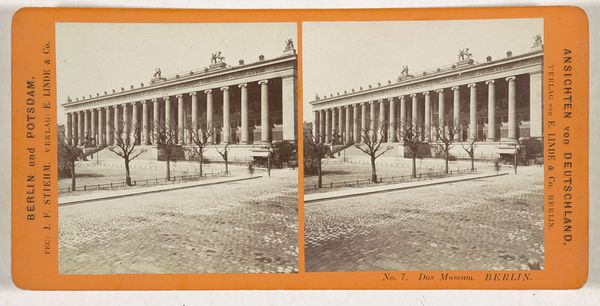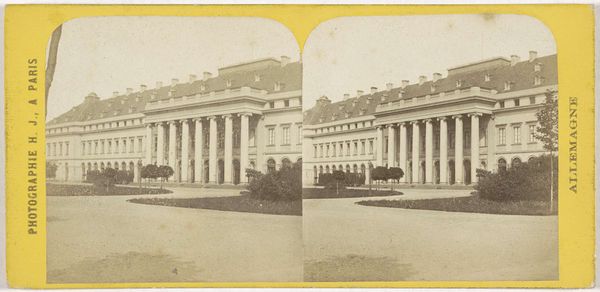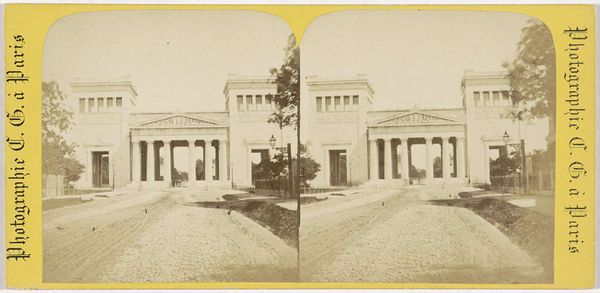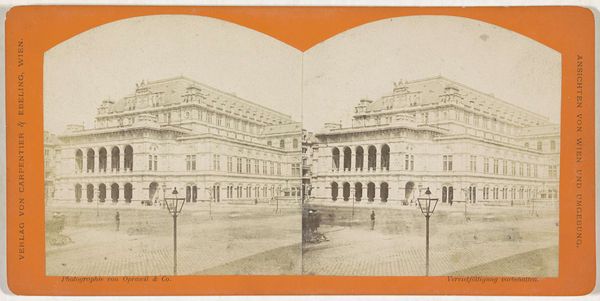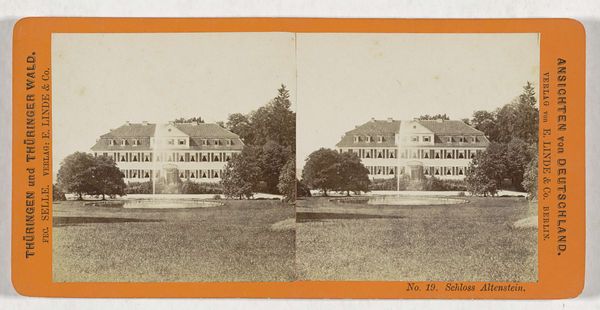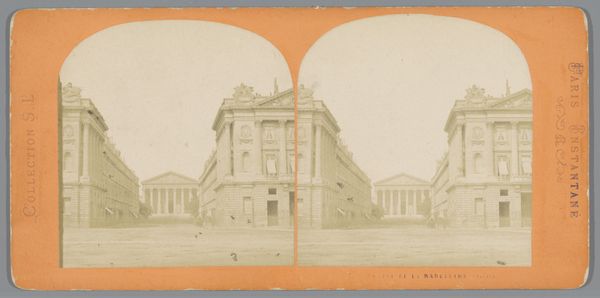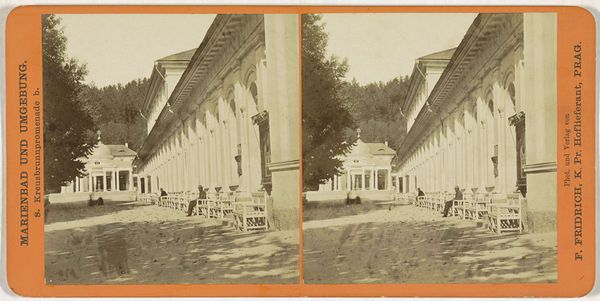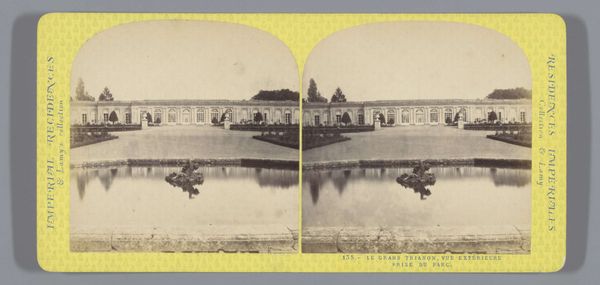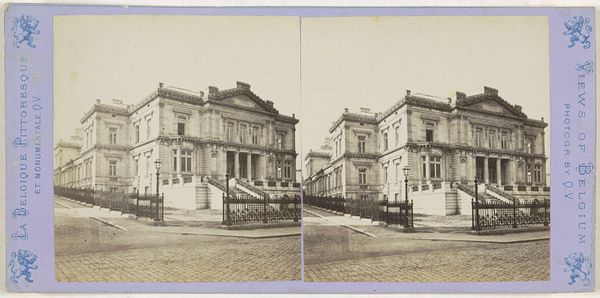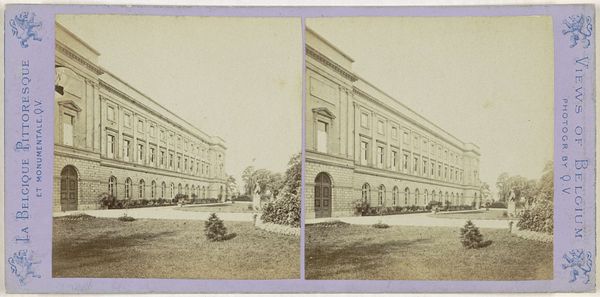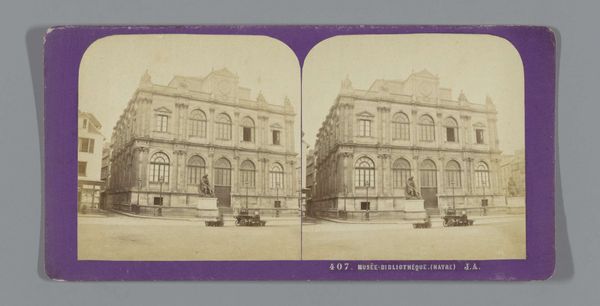
Dimensions: height 86 mm, width 176 mm
Copyright: Rijks Museum: Open Domain
Editor: This is a gelatin-silver print of the Prinz-Albrecht-Palais in Berlin, dating from around 1868-1870, by Johann Friedrich Stiehm. The linear perspective is compelling, giving the photograph a strong sense of depth. How would you interpret the architecture of this image? Curator: Structurally, it presents a compelling study of symmetry and repetition. Notice the series of arches and Doric columns, precisely placed. Their rhythm creates a visually satisfying cadence, leading the eye deeper into the pictorial space. Observe also the play of light and shadow that accentuates the architectural forms, especially how the photograph captures subtle tonal variations of the stone, thus emphasizing their materiality. Editor: I see what you mean. The sharp definition really brings out the contrast. Does that relate to how the artist was making images back then? Curator: Precisely. Stiehm demonstrates mastery of early photographic techniques to capture detail. Consider how the rigid geometry of the stonework complements the organic shapes of the foliage overhead. Does that counterpoint alter the static nature of architecture, giving the scene more vitality? Editor: That's a very good point. Now that I'm paying more attention to this interplay, it seems less like documentation and more like interpretation. I might have overlooked that without considering formal choices. Curator: Formal analysis allows us to decode representational strategies and interpret the visual elements on their own terms. Editor: I see so many different ways to view a work of art. Thank you!
Comments
No comments
Be the first to comment and join the conversation on the ultimate creative platform.
